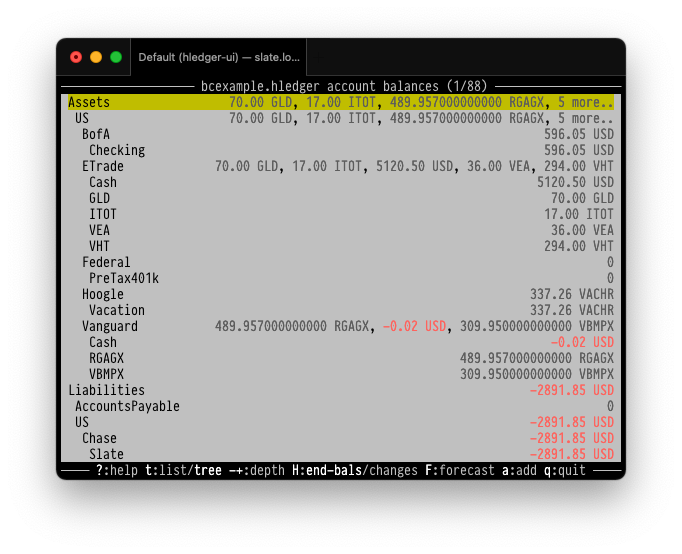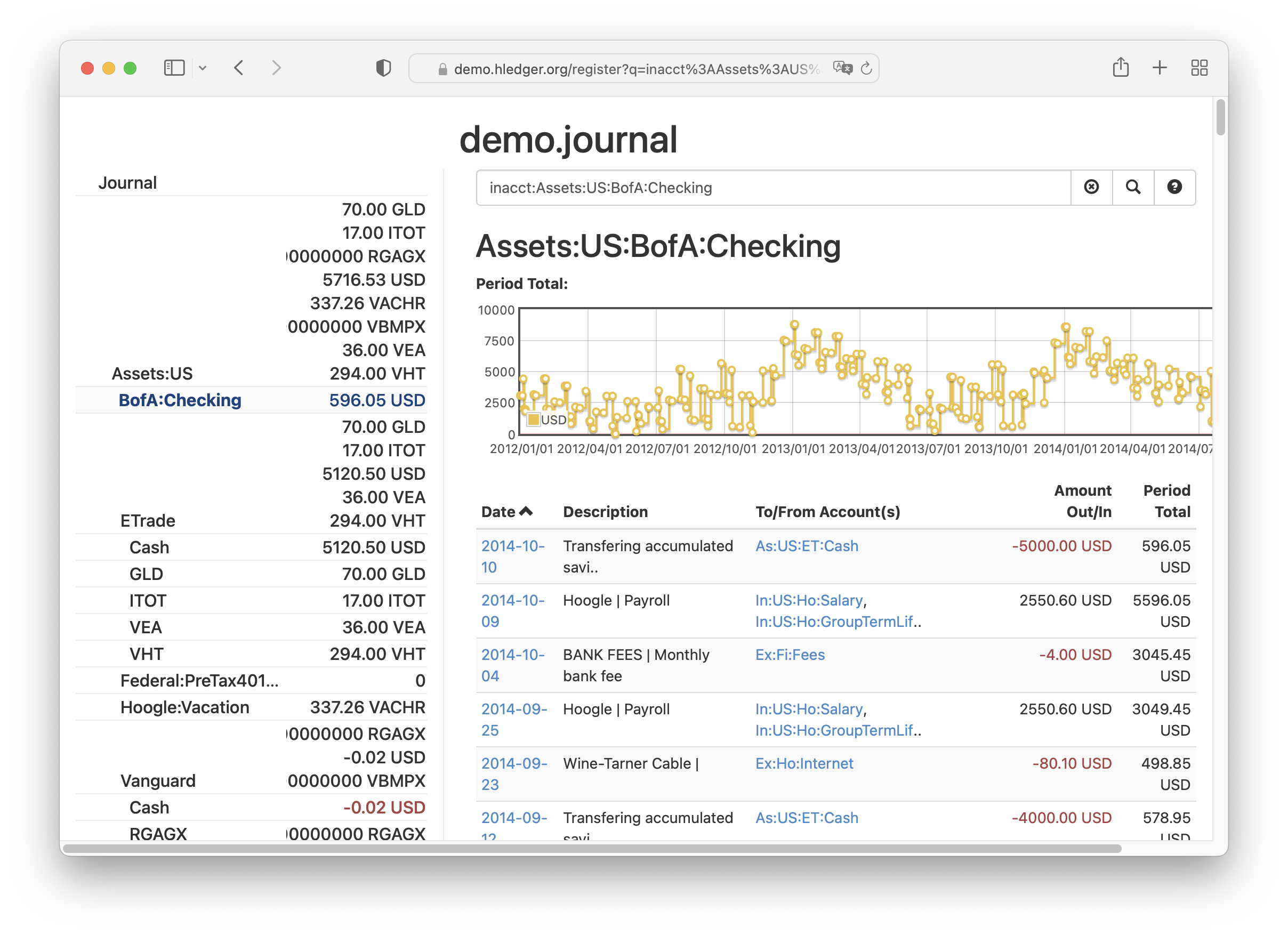
hledger
plain text accounting software
hledger is free, friendly, fast, battle-tested, cross-platform, double-entry, multi-currency, multi-interface, GNU GPLv3-licensed, plain text accounting software! It lets you track and analyse money, investments, and cryptocurrencies; also time, inventory, or other things involving dates or numbers.
hledger is built around human-readable, version-controllable, future-proof, plain text data. You can import from CSV or other data sources; or you can record transactions with your favourite text editing tools, IDEs, or data entry UIs.
hledger's user interfaces might seem basic, but you'll find it is powerful, expressive, and fun to use. It scales smoothly from simple to sophisticated needs. In fact, hledger is a combination of
- user-friendly, dependable accounting app
- swiss army penknife and power tool for financial data
- hands-on bookkeeping tutorial / refresher course / library
- and a supportive community of fellow money wranglers.
It can help you
- understand bookkeeping
- keep your financial records safe, correct, and private
- untangle accounting messes
- know your financial status
- keep track of loans, due dates, invoices
- forecast future activity and balances
- search your financial history
- categorise your spending
- understand your patterns
- make impactful changes and plans
- track spending and saving goals
- answer financial questions
- explore what-if scenarios
- produce detailed time reports
- get data needed for tax preparation
- convert/transform financial data
- check the correctness of other systems
- automate accounting tasks
- create more clarity, balance, and peace of mind.
Why hledger ?
hledger is free, GPLv3+ accounting software that runs on unix, mac, windows, and the web.
It is user-friendly plain text accounting software, using human-readable plain text data files. It comes with command line, TUI, and web browser interfaces, and there are also some compatible phone apps. It is powerful enough for the most technical users, but also usable by non-techies (especially with a little setup help). Command line skills are useful but not essential. You can enter data using a data entry UI, or your favourite text editor/IDE, or by importing CSV data from banks.
hledger is dependable. Your financial data remains local, private, and free from vendor lock-in. It is stored as plain text files, which are human readable, version controllable, scripting friendly, and future proof. hledger is thoroughly documented, and built with the high assurance Haskell programming language. We take quality seriously. We will pay you $50 if you find or fix a regression bug.
hledger is fast, lightweight, and versatile. Using time-tested double entry bookkeeping, with an easier-to-learn sign convention, and easy reports, it can track and report on: money, investments, cryptocurrencies, time, inventory, or any other countable commodity.
hledger is actively maintained and used (since 2007), with a new release each quarter and excellent free support. Paid support and customisation are also available. hledger is a long term project led by Simon Michael with many contributors.
See also What problems does hledger solve ?, Features, and the FAQ, which answers questions like How does hledger relate to Ledger ?
Get started
Welcome! This plain text accounting stuff is both useful and more fun than you'd think.
Install tells how to get an up-to-date version of hledger quickly.
Support lists our discussion fora. Don't hesitate to ask questions or report issues.
Docs lists our extensive documentation. This is a good place to visit next.
Get involved
Add a github star to help make us a notable Haskell app! (As of 2025 we're #19.)
Your financial support is invaluable and helps sustain this work. See Sponsor hledger and Finance.
To contribute in other ways, see Contributor Quick Start and Developer docs.
CREDITS shows many of the people who have contributed code over the years.
Tips for using this website:
- The lines button at top left toggles the site's navigation sidebar.
- The paintbrush button changes the site theme.
- The magnifying-glass button searches this site.
- The left and right arrow keys step through the pages (as listed in the sidebar).
- Access keys are also available:
ssidebar,ttheme,/search,1home,2changes. You may need to first click the page body to set the focus.


